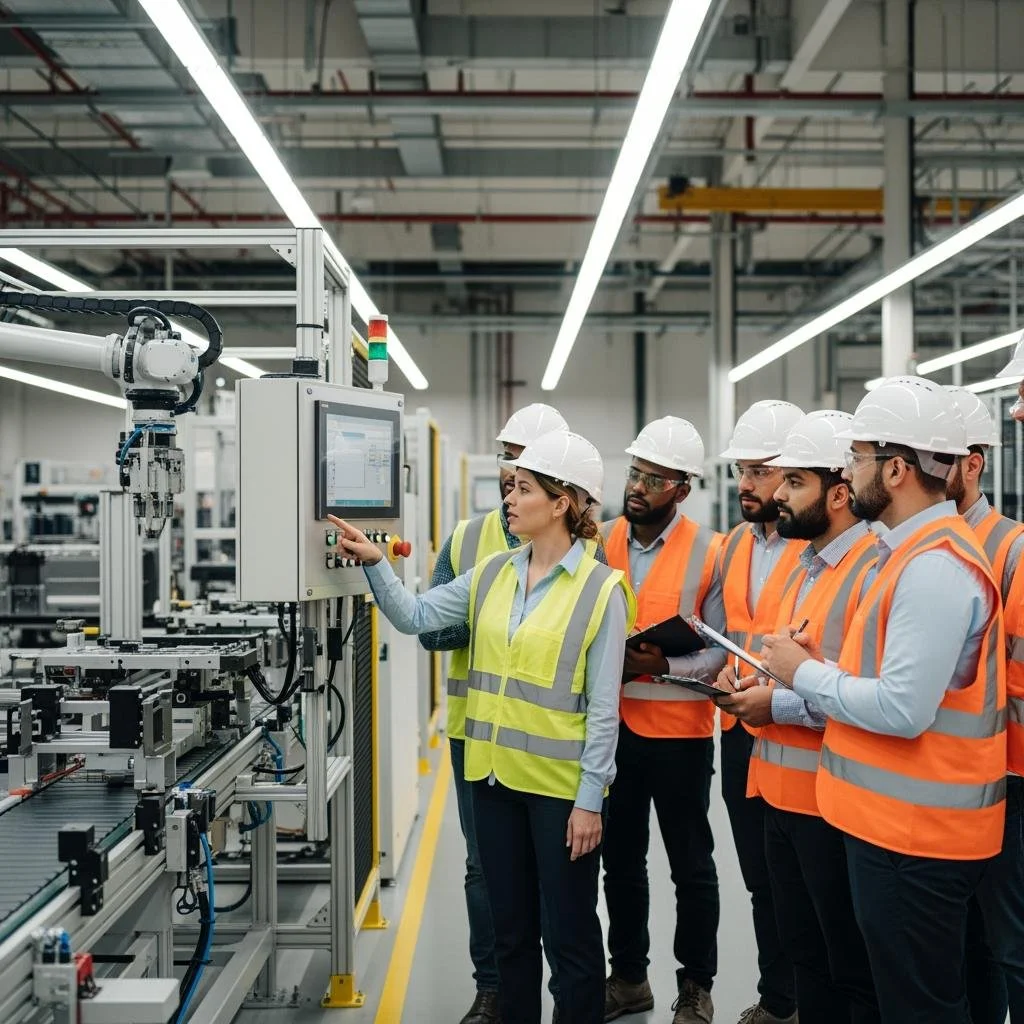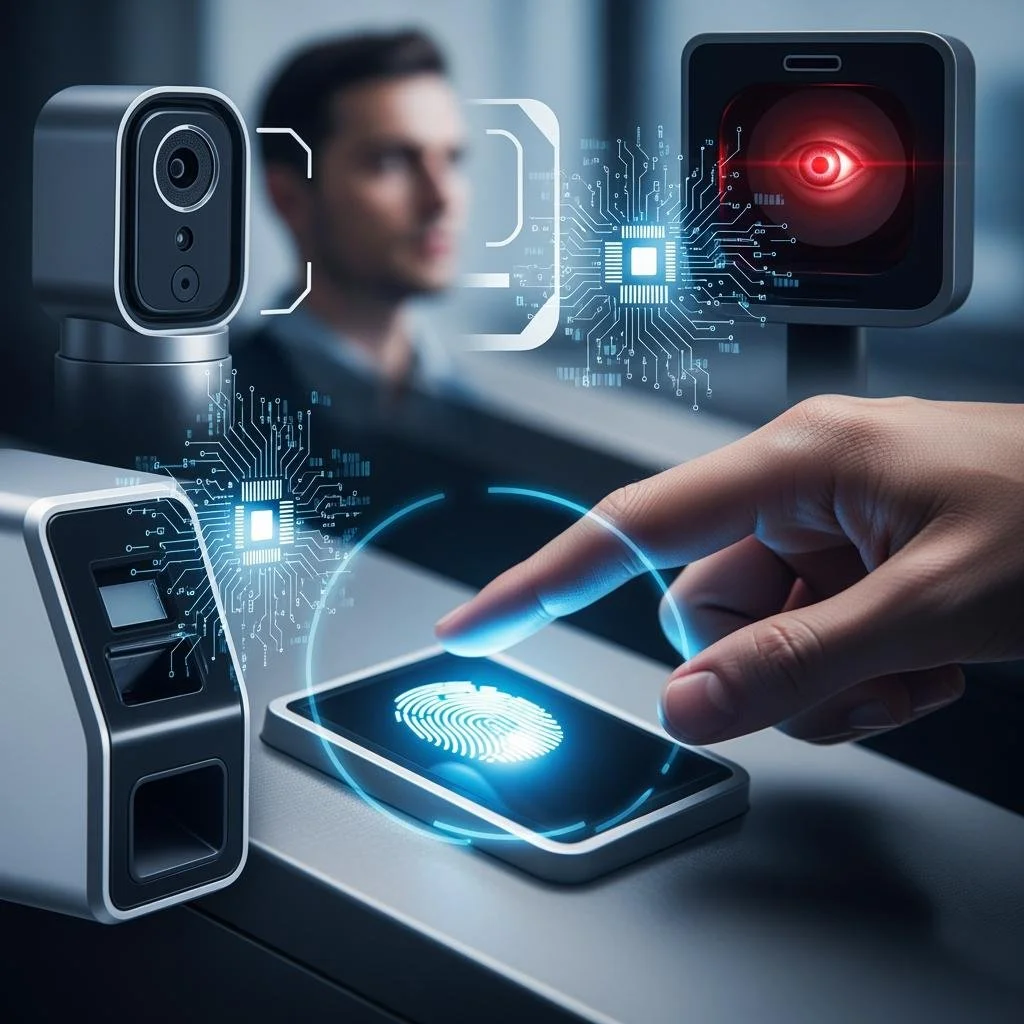AI-Powered Surveillance: Enhancing Business Security
As businesses strive to protect their assets, data, and employees, the integration of artificial intelligence (AI) and surveillance technologies has emerged as a game-changer in the security landscape. AI-powered surveillance offers unparalleled capabilities to detect threats, automate monitoring, and enhance situational awareness.
In this article, we discuss how AI-powered surveillance can boost business security responsibly while maintaining ethical standards.
No. 1
The Rise of AI in Surveillance
AI has revolutionized various industries, and the field of surveillance is no exception.
By leveraging machine learning algorithms and deep learning neural networks, AI-powered surveillance systems can analyze vast amounts of data, identify patterns, and make intelligent decisions in real time. These systems can process video footage, audio recordings, and other sensor data to detect potential threats, anomalies, and suspicious activities with remarkable accuracy.
No. 2
Benefits of AI-Powered Surveillance
One of the primary advantages of AI-powered surveillance is its ability to detect threats more effectively than traditional systems.
AI algorithms can be trained to recognize specific patterns, behaviors, and objects that may pose a risk to a business. For instance, AI-enabled business surveillance cameras equipped with video analytics can detect unusual movements, abandoned objects, or unauthorized access attempts, allowing security personnel to respond swiftly and mitigate potential threats.
No. 3
Enhanced Situational Awareness
AI-powered surveillance systems can provide a comprehensive overview of a business's security landscape by integrating data from multiple sources, such as cameras, access control systems, and sensor networks.
This holistic view enables security teams to maintain situational awareness, identify potential vulnerabilities, and proactively address security concerns before they escalate.
No. 4
Automated Monitoring and Alerting
Traditional surveillance systems often rely on human operators to continuously monitor video feeds, which can be a tedious and error-prone task.
AI-powered surveillance, on the other hand, can automate the monitoring process, reducing the risk of human error and fatigue. These systems can continuously analyze data streams and generate real-time alerts when potential threats or anomalies are detected, enabling rapid response and mitigation efforts.
No. 5
Predictive Analytics and Risk Assessment
AI algorithms can learn from historical data and patterns, allowing them to anticipate potential security threats and provide valuable insights for risk assessment and mitigation strategies.
By analyzing data from past incidents, AI systems can identify trends, recognize precursors to security breaches, and help businesses implement proactive measures to prevent future occurrences.
No. 6
AI-Powered Surveillance Use Cases
AI-powered surveillance can significantly enhance perimeter and access control measures for businesses.
The enhanced perimeter and access control measures for businesses provides real-time monitoring and alerts for any unauthorized access or breaches, allowing for immediate response and mitigation. By integrating facial recognition, license plate recognition, and object detection capabilities, these systems can identify authorized personnel, vehicles, and objects, while flagging unauthorized entities attempting to gain access to restricted areas.
No. 7
Theft and Loss Prevention
Retail businesses and warehouses can leverage AI-powered surveillance to combat theft and loss prevention challenges.
These systems can detect suspicious behaviors, such as shoplifting or unauthorized removal of inventory, and alert security personnel for immediate intervention. Additionally, AI can assist in tracking and recovering stolen assets by analyzing video footage and identifying potential suspects.
No. 8
Employee Safety and Workplace Monitoring
AI-powered surveillance can play a crucial role in ensuring employee safety and monitoring workplace environments.
By detecting potential hazards, unsafe behaviors, or violations of safety protocols, these systems can help mitigate risks and create a safer working environment for employees. Moreover, AI can assist in monitoring compliance with regulatory requirements and company policies.
No. 9
Addressing Privacy and Ethical Concerns
While AI-powered surveillance offers numerous benefits for enhancing business security, it is essential to address privacy and ethical concerns.
Businesses must strike a balance between leveraging advanced surveillance technologies and respecting individual privacy rights. Clear policies and guidelines should be established to ensure the responsible and ethical use of AI-powered surveillance systems.
No. 10
Data Privacy and Compliance
Businesses should implement robust data protection measures to safeguard the privacy of individuals captured by surveillance systems.
This includes adhering to relevant data privacy regulations, such as the General Data Protection Regulation (GDPR) in the European Union or the California Consumer Privacy Act (CCPA) in the United States. Proper data handling, storage, and retention practices should be established to ensure compliance and minimize the risk of data breaches.
No. 11
Transparency and Accountability
To build trust and foster acceptance of AI-powered surveillance systems, businesses should embrace transparency and accountability.
Clear communication about the purpose, scope, and limitations of these systems should be provided to employees, customers, and other stakeholders. Additionally, establishing robust oversight mechanisms and accountability measures can help mitigate potential misuse or abuse of these technologies.
No. 12
Ethical AI Development and Deployment
As AI-powered surveillance systems become more sophisticated, it is crucial to ensure that these technologies are developed and deployed with ethical considerations in mind.
Businesses should collaborate with AI experts, ethicists, and policymakers to establish guidelines and best practices for the responsible development and use of AI in surveillance applications. Addressing issues such as algorithmic bias, fairness, and explainability should be a priority to prevent unintended consequences and uphold ethical standards.
No. 13
The Future of AI-Powered Surveillance
The integration of AI and surveillance technologies is still in its early stages, and the future holds immense potential for further advancements.
As AI algorithms become more powerful and data-driven decision-making capabilities improve, we can expect to see more sophisticated and intelligent surveillance solutions emerge. AI-powered surveillance in the future will likely be more advanced, utilizing facial recognition technology, predictive analytics, and real-time tracking to monitor individuals' movements and behaviors. This increased efficiency and accuracy may raise concerns over privacy rights and ethical implications in society.
No. 14
Edge AI and Real-Time Processing
Edge AI, which involves processing data directly on hardware devices rather than relying on cloud-based systems, will play a crucial role in enabling real-time processing and decision-making for surveillance applications.
Edge AI refers to artificial intelligence algorithms processed locally on a hardware device, like a smartphone or IoT device, instead of relying on a centralized server. Real-time processing involves analyzing and responding to data instantly as it is generated, enabling swift decision-making and actions based on the most up-to-date information available. By bringing AI capabilities closer to the data source, edge AI can reduce latency and enable faster response times, essential for effective threat detection and mitigation.
No. 15
Multi-Modal AI and Sensor Fusion
Future AI-powered surveillance systems will likely integrate multiple data modalities, such as video, audio, and sensor data, through sensor fusion techniques.
Multi-modal AI refers to artificial intelligence systems that can process and understand information from multiple sources such as text, images, and audio. Sensor fusion involves combining data from different sensors to enhance accuracy and reliability in tasks like navigation and object detection. This multi-modal approach will provide a more comprehensive understanding of the surveillance environment, enabling more accurate threat detection and analysis.
No. 16
AI-Human Collaboration and Augmented Intelligence
While AI-powered surveillance systems can automate many tasks and decision-making processes, human expertise and judgment will remain crucial.
The future lies in fostering effective collaboration between AI and human operators, where AI augments human capabilities rather than replacing them entirely. This synergy can lead to more informed decision-making, improved situational awareness, and enhanced overall security.
Takeaways
AI-powered surveillance is revolutionizing the way businesses approach security challenges. By leveraging advanced machine learning algorithms and data analytics capabilities, these systems can provide enhanced threat detection, improved situational awareness, automated monitoring, and predictive analytics for risk assessment.
Addressing privacy and ethics is crucial. AI-powered surveillance enhances business security, protects assets, and ensures safety for all. As technology advances, AI surveillance becomes more sophisticated, allowing smarter monitoring and decision-making. Using AI surveillance can help businesses stay secure and competitive in a changing threat environment.
Here are the key takeaways of AI-powered surveillance:
AI-powered surveillance enhances threat detection, situational awareness, automated monitoring, and predictive analytics capabilities for businesses.
Addressing privacy and ethical concerns through robust data protection measures, transparency, and accountability is crucial for the responsible deployment of these systems.
Collaboration between AI experts, ethicists, and policymakers can ensure the ethical development and use of AI-powered surveillance technologies.
Edge AI, multi-modal AI, and AI-human collaboration will shape the future of intelligent surveillance solutions.
Embracing AI-powered surveillance responsibly can provide businesses with a competitive edge in managing security risks and safeguarding their operations.
FAQ
How does AI-powered surveillance protect individual privacy?
AI-powered surveillance systems can be designed with robust data protection measures, such as anonymization, data minimization, and strict access controls, to safeguard individual privacy. Additionally, clear policies and guidelines can ensure compliance with data privacy regulations.
Can AI-powered surveillance systems be biased or discriminatory?
Addressing algorithmic bias is a crucial consideration in the development and deployment of AI systems. As businesses integrate AI technologies, managing the full spectrum of risks becomes essential. Specialized ai risk management services help organizations identify vulnerabilities, ensure regulatory compliance, and implement ethical safeguards. These services provide ongoing monitoring and assessment to address emerging challenges. Rigorous testing, auditing, and the inclusion of diverse perspectives during the development process can help mitigate potential biases.
What measures can be taken to prevent the misuse of AI-powered surveillance?
Establishing clear oversight mechanisms, accountability measures, and transparency about the purpose and scope of these systems can help prevent misuse. Additionally, fostering collaboration between AI experts, ethicists, and policymakers can ensure responsible development and deployment.
How can businesses ensure the accuracy and reliability of AI-powered surveillance systems?
Continuous training and updating of AI algorithms with high-quality and diverse data, as well as rigorous testing and validation processes, can help ensure the accuracy and reliability of these systems.
What are the potential limitations of AI-powered surveillance?
While AI-powered surveillance offers many benefits, it is important to recognize its limitations. These systems may struggle with complex or ambiguous situations, and human expertise and judgment will remain crucial for effective decision-making.































